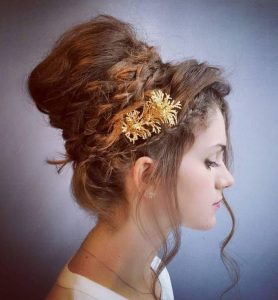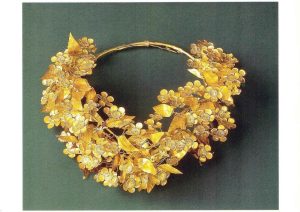Welcome to the 2nd part of this wonderful journey through the Mediterranean hair tales. Here we explore the different traditions knots, hairstyles. Without any further ad, let’s dive in.
Religious Offerings: Hair was sometimes offered as a votive offering to deities in religious rituals. This practice symbolized a connection between the individual and the divine, with the hair serving as a tangible representation of devotion or supplication.

Source: www.therighthairstyles.com
Tragic Symbolism: In Greek tragedies, cutting or disheveling one’s hair could symbolize grief, sorrow or a moment of intense emotion. Characters often expressed their distress by tearing at their hair or letting it fall loose in times of tragedy.
Mythological Stories: Certain myths featured hair as a central element. For instance, the story of Medusa, whose hair was turned into snakes as a punishment, showcased the transformative and symbolic power of hair in mythology.
In summary, the symbolism of hair in ancient Greece encompassed ideals of beauty, femininity, transition and religious devotion. Myths and cultural practices conveyed the multifaceted significance of hair in different aspects of life.

Source: www.therighthairstyles.com
These beautiful natural “crowns” were styled in the ancient times in different, creative and various ways, influenced by cultural and societal norms. Some common hairstyles included:
Doric Knot (Dorischer Knoten): A simple style where the hair was tied at the nape of the neck, creating a low-hanging knot or bun.
Chignon (Knot or Bun): Women would gather their hair at the back of the head or neck and secure it with pins or clasps, creating a chignon.
Braids and Twists: Braiding or twisting sections of hair was a popular choice. These could be worn hanging loose, partially gathered or woven into more elaborate designs.

Source: www.www.salaminionvima.gr
Sphinx Knot (Sphinx-Knoten): This style involved dividing the hair into two sections, twisting them, and securing them at the crown or back of the head.
Melon Hairstyle (Melonen-Frisur): Named for its resemblance to a melon, this involved arranging the hair in a circular shape on top of the head.
Wreaths and Headbands: Women adorned their hairstyles with wreaths made of flowers, leaves or ribbons. Headbands were also used to keep hair in place.

Source: www.www.eea.gr
Curls and Waves: Some women embraced natural curls and waves, styling their hair in loose, cascading curls or waves.
Hairstyles in ancient Greece often reflected the cultural and social context, and women would adjust their choices based on occasions, status, and personal preferences All these beautitul and elegant hairstyles required skills and a set of tools.
If you want to discover what they were using (and perhaps use it yourself to achieve the style you like the most), keep reading and go to the 3rd and final part of this mesmerizing article!